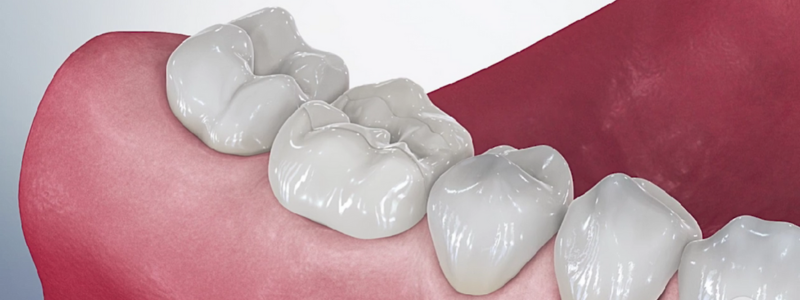
In this blog on dental inlays, we will look at the following topics:
- What Are Dental Inlays?
- The Benefits Of Choosing Dental Inlays
- The Process Of Getting Dental Inlays
- Difference Between A Dental Inlay And Onlay
- Post-Procedure Care For A Dental Inlay
- Dental Inlays FAQ
What Are Dental Inlays?
Inlays are one of the dental restoration options used to rebuild tooth structure following the removal of a cavity. Cavities can significantly impact a tooth’s appearance, shape, and function. Inlays work to fill the gap left behind after the decay is removed by using ceramic or composite resin materials. At AZ Family Dental, we use tooth-colored ceramic, also called porcelain, for both our inlay and onlay fillings.
The Benefits Of Choosing Dental Inlays
Inlays have several benefits, including reversing tooth decay, cavities, and tooth and filling fractures. They also provide cosmetic enhancements by returning your teeth to their original appearance and function.
The Process Of Getting Dental Inlays
During the first appointment, your dentist will apply a numbing agent to the affected area and then remove the damaged or decayed portion of the tooth. Once the cavity is taken care of, space is left behind for the inlay.
Your dentist will then use an intraoral scanner to gather images and information to help the dental laboratory design the inlay. An expert technician will create your custom inlay using ceramic or composite filling materials.
In the meantime, your dentist will place a temporary over your tooth to protect it as you wait for your custom inlay to be created. Once your inlay is ready (typically made within a few weeks), your dentist will remove the temporary, make any final adjustments, and bond the inlay into the space, smoothing over rough spots.
Difference Between A Dental Inlay And Onlay
Dental inlays and onlays are both custom-made dental fillings that are durable and resemble your natural tooth. At AZ Family Dental, we use porcelain for our inlays or onlays that effortlessly blend with your natural teeth. The critical difference between these is where they are placed. Inlays fill the space between the raised features on your back teeth, known as cusps. Onlays, however, fill the inside cusp and extend over one or more sides of the tooth. Your dentist will provide expert advice on the types of fillings you require for your situation.
Post-Procedure Care For A Dental Inlay
After your dental inlay procedure, it’s important to avoid foods that are extremely hot or cold. This can trigger pain due to sensitivity from the inlays. Within a few days, the sensitivity should decrease. Aside from this, the recovery process is very minimal; continue caring for your teeth by brushing and flossing properly, and schedule your next dental appointment on time.
Dental Inlays FAQ
Inlays are designed to treat more severe cavities, particularly in the back of your mouth. Inlays are made with more durable material than regular fillings, making your teeth much stronger.
Dental inlays can last up to 20 to 30 years with proper care. With regular wear and tear, your dentist can easily replace them with new fillings when the time comes.
Most insurance plans offer partial or full coverage for dental inlays. Out-of-pocket, you can expect to pay around $250 to $1,500 per tooth.
Inlays should not fall out, and this typically occurs due to poor oral hygiene habits. If this happens, it’s important to consult your dentist immediately, as it can indicate decay build-up underneath the filling.
For minor cavities, inlays can treat an infected tooth. If the infection reaches the tooth’s nerve, you’ll likely need a root canal, which can fix the issue but lead to weakness due to a cut-off in blood and nerve supply. Following a root canal, your dentist may recommend dental crowns to protect the tooth from the effects of the root canal.

